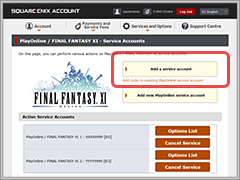

Requirement: Ability Boost Operation Test. Ability: Use defensive abilities and protect allies. Requirement: n/a Ability: No specialized abilities. Successfully complete the indicated task to unlock the corresponding job. There are 21 jobs that can be changed at any time when not on the field. Successfully complete the indicated task to unlock the corresponding character:Īerith: Use 500 healing abilities. Repeat the process a total of ten times to unlock the mastery quests for your selected class. Enter that class, explore the world, then return to Libertas. Use the following trick to quickly unlock the Mastery quests for any class. Reach Rank 5 after ten quests with a specific class to unlock the Mastery quests. Select "Return To Libertas" and collect the materials. Use it to break both mirror parts, then get the materials. The Tornado skill does 9,999 damage to both Amaterasu's mirrors, even without any other equipment. Make sure you calculate how much CP you will need to do the glitch before you start reducing your CP. Then, fuse atmaliths (which normally cost high even numbers) to get your CP down, or buy some non-custom abilities. Note: An easy way to get your CP to the right number is to do "Roam The World" repeatedly until you come back with a CP value that ends with a 0. After you make the purchase, your CP value will go into the negative, and the game corrects this by giving you exactly 99,999,999 CP. Then, press Up on the control pad, and the game will allow you to buy one more copy than you can afford.
Final fantasy 7 serial code upgrade#
Choose an upgrade that costs exactly as much CP as you currently have - so that if you bought it you would have 0 CP remaining. In reality, the mesh position may be edited or calculated accoridng to game logic, or removed at all - this is all NOT supported.Go to the blacksmith and select the "Upgrade" option. Since most blueprints just have 1 mesh inside and some logic, i'm assuming they are simply placing that mesh.
Final fantasy 7 serial code code#
Note: blueprints are not properly supported, because i'm not going to read their code at all. For such models ascii file will also have material name as texture name, so if you want, you can open that material in umodel and see whats the color and other properties. Some models do not use any textures (for example, solid color materials or lights). In that case you can search and apply them manually. If there will be no "material.db" file, or some materials will be missing in that file, tool will give messages and material names will be used for textures. JPG), you need to replace ".png" to ".jpg" in ASCII file with any text editor before loading it. If you converted textures to another format (for example. By default, ASCII file will have texture names with ".PNG" format. If "material.db" file will be next to the tool, material information from that file will be used to place texture names in the output ASCII file, so when loaded, all textures will be applied automatically. There's no proper blueprint support, so some models may be placed incorrectly. If "blueprint.db" file will be next to the tool, it will try and place all models mentioned in blueprints on the map. If some models will be missing, tool will give messages. Current version will extract static meshes, skeletal meshes, blueprint-generated meshes, lights and landscapes from a map.įor map extraction to work, "staticmesh.raw" and "skeletalmesh.raw" folders with previously extracted data must be in the same folder with the tool. umap file onto the tool, or run the tool from command line with umap filename as parameter. When prompted "are you sure?" you can press "enter" to confirm or Ctrl-C to cancel.ģ. uasset files and try converting them all. Tool will search that folder and all subfolders for. To convert all assets in a folder, place the tool in that folder and run it.

If "blueprint.db" file already exists next to the tool, it will be updated with newly found blueprints.Ģ. If asset file contains a blueprint, it will create "blueprint.db" file with information for later use in map extraction. If "material.db" file already exists next to the tool, it will be updated with newly found materials. If asset file contains a material, it will export material info in a text file, and create "material.db" file with information for later use in map extraction. Raw data will also be saved in "staticmesh.raw" & "skeletalmesh.raw" folders for later use in map extraction. If asset file contains static or skeletal mesh, in will be exported to ASCII. After that you can convert them to the format you like. If asset file contains a texture, in will be exported to "textures" subfolder in Directx10 DDS format. To convert one asset, drop asset file onto the tool, or run the tool from command line with asset filename as parameter. You can use the tool to convert individual assets, or all assets in a folder.ġ.


 0 kommentar(er)
0 kommentar(er)
